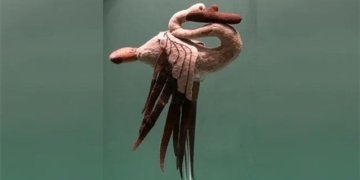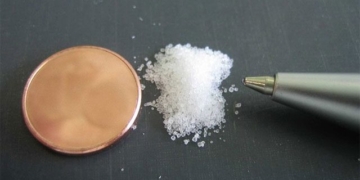In May 2001, Lew Shao, a woman from Beijing, gave birth to a son through in vitro fertilization. A month later, she discovered she was pregnant again. In February 2002, Lew gave birth to her second son. The genetic testing results were astonishing: the first son was the father of the second child.
Geneticists at Peking University Medical College, who were monitoring Lew’s case, could not understand why she became pregnant again just one month later, as they followed the standard protocol and had never encountered any issues before. As required, before undergoing in vitro fertilization, Lew underwent hormone therapy to ensure that not just one, but several eggs matured in her ovaries.
Professor Mei Shen from Peking University Medical College, who tracked Lew’s unique pregnancy, stated that they examined the genes of the second child and his parents, Lew and Chjey. The child had the mother’s genes, but there were no traces of the father’s genes. Initially, it was thought that Chjey might have some genetic defect, which would explain why his genes were untraceable in the child. However, if this hypothesis were correct, the same situation should apply to the first child. To confirm or refute this hypothesis, the first child’s DNA was also analyzed. Here, they encountered a paradox: Lew’s first child was the father of his sibling. However, Lew had conceived the second child in a normal way—carrying the pregnancy for the full nine months, which meant fertilization occurred just days after the first birth.
The scientists conducted thorough research but could not comprehend how this occurred. Upon meticulous examination of Lew, they discovered traces of placenta remaining in her uterus following the first birth. In principle, the remaining placenta contains the genetic makeup of the first child. One of these cells had… fertilized the egg.
Normally, the placenta should be expelled completely after birth. However, sometimes due to metabolic disorders, fragments of the placenta may remain. Typically, these fragments become inflamed, and only in very rare cases do they become “calcified.” (This can occasionally happen with embryos that do not develop. A woman can carry a “fossilized” embryo for decades without knowing about it, not to mention very small placental fragments).
It seems that a similar process occurred with Lew. Some fragments of the placenta may have dissolved, while others accumulated calcium salts and “calcified.” Subsequently, the cells—placental remnants—were “fossilized” into countless small particles and dispersed throughout the uterus and fallopian tubes like grains of sand.
Meanwhile, due to the hormone treatment before pregnancy, Lew had an additional egg mature prematurely in her ovaries (experts are aware of such cases), and this egg moved into the fallopian tube. The placental cells surrounding this egg acted like sperm in a typical fertilization scenario. Due to their assault, the outer membrane of the egg opened, as in normal fertilization, allowing one of the “calcified” particles to enter.
The chemical environment of the egg is highly activating, allowing it to easily dissolve the “sand grain” shell, and the genes contained within combined with the egg’s own genes. Thus, fertilization occurred. The genes of the placenta and the egg merged, leading to the normal development of the embryo…
Comments from Scientists
Mr. Boris Leonov, Professor and Doctor of Medicine, Head of the Embryology Department at the Russian Center for Obstetrics and Gynecology, commented on Lew’s special case: “It is entirely possible that the cells of the first embryo, when combined with the prematurely matured egg, transmitted their genetic makeup to the egg. Perhaps this unusual conception, occurring without the husband’s involvement, happened in this way.”
This event may be an extremely rare case and thus has not been documented in medical literature regarding natural cloning. It may take several more years for scientists to fully argue the phenomenon.




















































